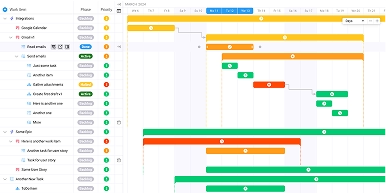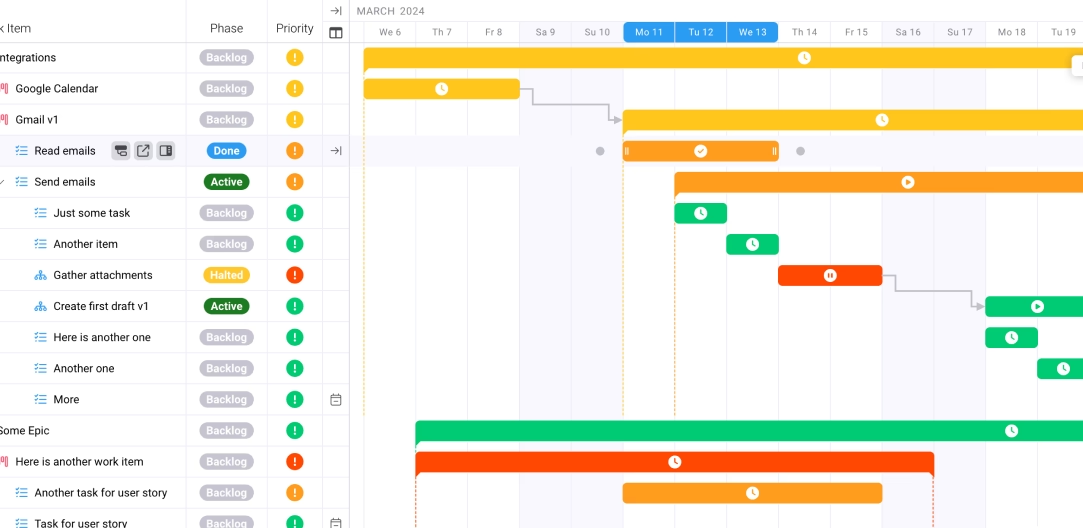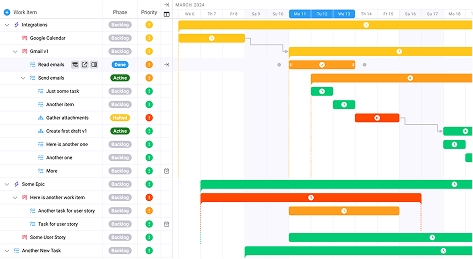
Asana vs. Monday: Strengths and Weaknesses
Key takeaways:
- Asana excels in workflow automation and task management complexity, while Monday offers superior visual customization and user interface design
- Both platforms show significant strengths in remote team collaboration, addressing the needs of distributed workforces
- Security and integration capabilities vary substantially between the platforms, impacting enterprise adoption decisions
- Cost considerations and scalability factors differ dramatically based on team size and feature requirements
When 77% of high-performing teams rely on robust project management software to deliver results, choosing between leading platforms becomes critical for your organization's success. The Asana vs. Monday debate has intensified as both platforms compete for market dominance, yet each brings distinct advantages and limitations that can make or break your team's productivity. Understanding these nuanced differences isn't just about features—it's about finding the solution that aligns with your team's workflow, scales with your growth, and delivers measurable results.
The Current Challenge - What's Broken in Team Management
The project management landscape has fundamentally shifted as 58% of project management professionals work remotely at least some of the time, creating unprecedented coordination challenges. Traditional management approaches are failing teams who need seamless collaboration across time zones, departments, and project complexities.
Despite the global project management software market being projected to reach $15.06 billion by 2030, many organizations struggle with tool selection paralysis. Teams often find themselves caught between feature-rich platforms that overwhelm users and simplified tools that lack the depth needed for complex projects.
The core challenge isn't just choosing between two popular platforms—it's understanding how each platform addresses the specific pain points that modern teams face. Over 88% of organizations use project management software, signaling a move toward greater digital efficiency, yet many still struggle with poor adoption rates, limited customization, and integration headaches that hinder rather than help productivity.
Asana's Core Strengths: Where It Excels
Asana's greatest strength lies in its sophisticated workflow automation capabilities and task management depth. The platform shines when teams need to build complex, multi-stage processes with dependencies, custom fields, and advanced approval workflows. For marketing agencies managing campaign launches or consulting firms handling client deliverables, Asana's automation rules can eliminate hours of manual coordination work weekly.
The platform's project templates and goal-tracking features make it particularly valuable for teams that run similar projects repeatedly. Users value project management software for its strong capabilities in project tracking and effective team collaboration, and Asana delivers on both fronts with its comprehensive task hierarchies and collaborative proofing features.
Asana's reporting and portfolio management capabilities stand out for senior leadership teams who need visibility across multiple projects. The platform's advanced search functionality and custom dashboard creation enable project managers to surface insights that would otherwise remain buried in task details. This makes Asana especially powerful for organizations that need to demonstrate ROI and track performance metrics across diverse project types.
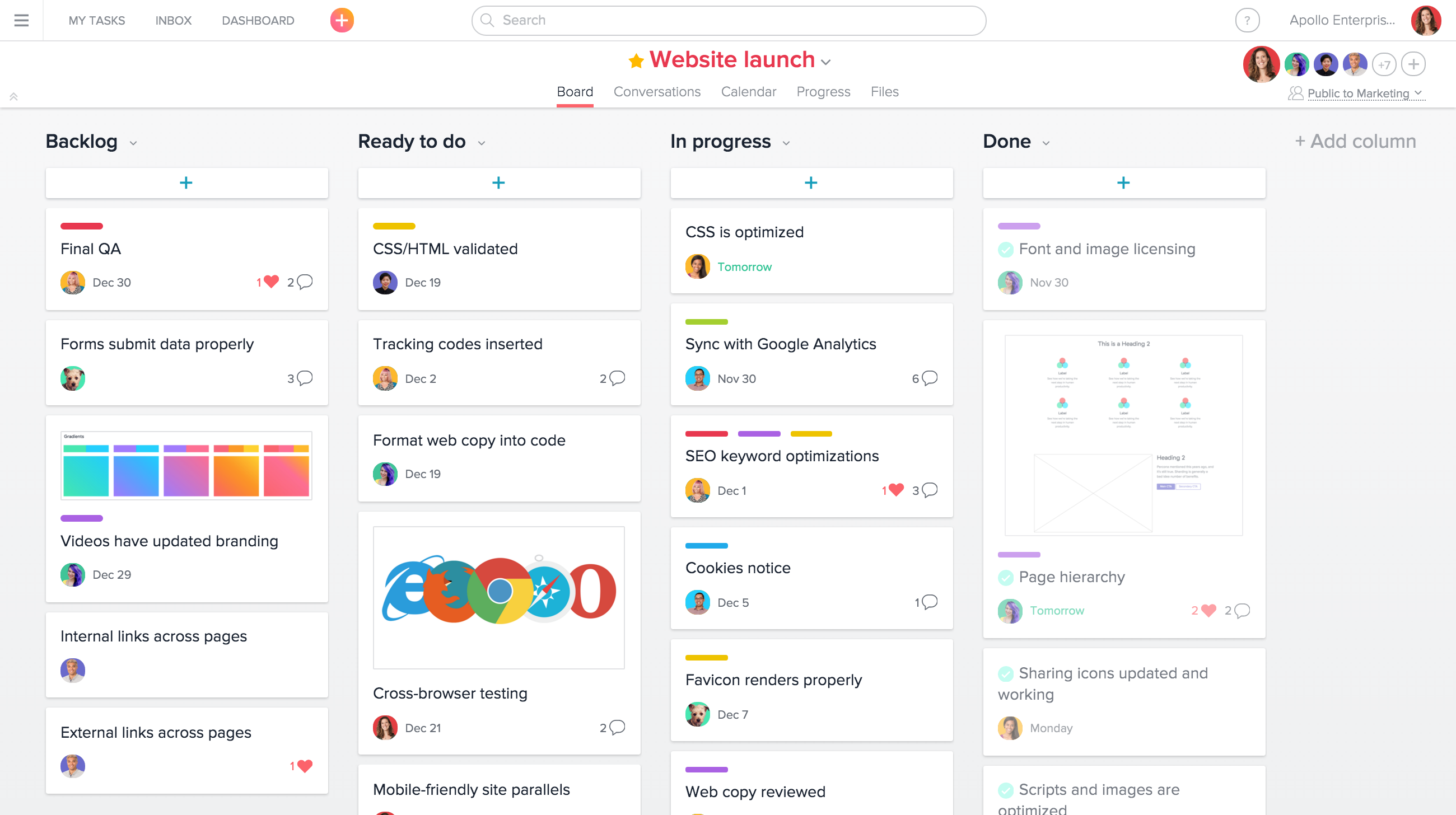
Monday's Competitive Advantages: Visual Excellence and User Adoption
Monday's primary strength centers on its visual interface design and intuitive user experience that drives higher adoption rates across diverse teams. The platform's color-coded boards and drag-and-drop functionality make project status immediately apparent, reducing the learning curve for new users and increasing team engagement with the tool.
The platform excels in customization flexibility, allowing teams to build tailored workflows without requiring technical expertise. Monday's automation center enables users to create sophisticated rules and triggers that connect tasks across boards, making it particularly valuable for operations teams managing complex, interconnected processes.
Monday's time tracking and resource management features integrate seamlessly with its visual boards, providing real-time insights into team capacity and project profitability. This combination makes it exceptionally well-suited for client service businesses that need to monitor billable hours while maintaining project momentum.
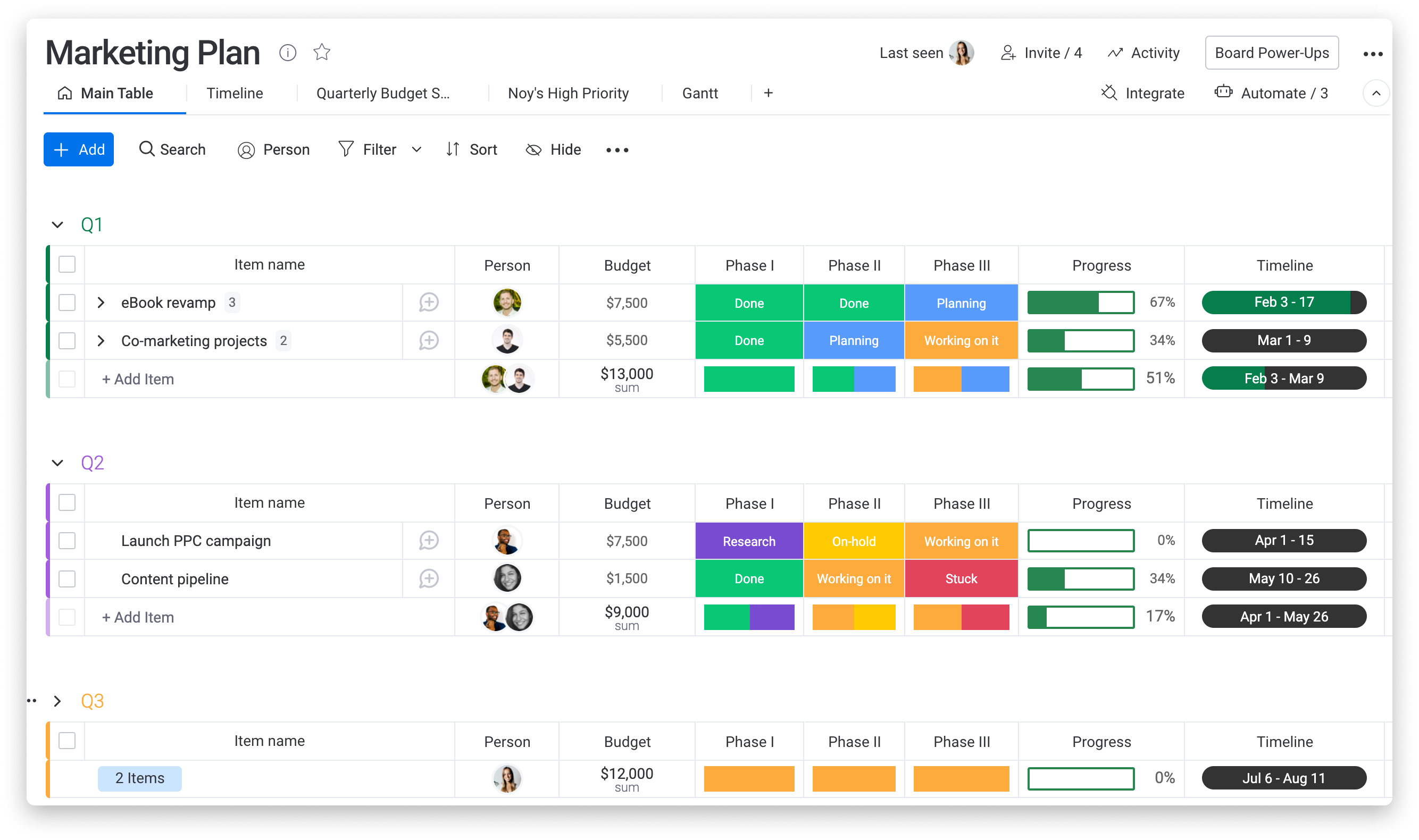
Implementation Tactics - Making the Right Choice
Evaluating your team's specific workflow requirements forms the foundation of platform selection. Teams handling high-volume, repetitive tasks with complex approval processes typically find Asana's automation capabilities more aligned with their needs. Conversely, teams prioritizing visual project management and rapid user adoption often benefit more from Monday's interface design.
Choosing the right project management tool is critical for agency success involves assessing your team's technical sophistication and change management capacity. Asana requires more initial setup time but delivers greater long-term customization options. Monday offers faster deployment but may require workarounds for complex workflow requirements.
Integration requirements significantly impact platform effectiveness. Both platforms offer extensive third-party connections, but their approaches differ substantially. Asana's integrations tend to focus on deep, bidirectional data sync, while Monday emphasizes visual integration that maintains its signature board interface across connected tools.
Consider your reporting and analytics needs carefully. Teams requiring detailed project analytics and custom reporting often find Asana's capabilities more comprehensive. Organizations prioritizing at-a-glance project status and team performance metrics typically prefer Monday's dashboard approach.
Security and Enterprise Considerations
Enterprise teams now evaluate project management platforms on their ability to protect intellectual property and maintain regulatory compliance, making security features a critical differentiator. Both platforms offer enterprise-grade security, but their approaches and compliance certifications vary.
Asana provides advanced user permissions and guest access controls that make it suitable for client-facing projects where external stakeholders need limited access to specific project elements. The platform's audit logs and admin controls support compliance requirements in regulated industries.
Monday offers robust security features including single sign-on, two-factor authentication, and IP restrictions that enterprise IT departments appreciate. The platform's approach to data governance and backup procedures aligns well with organizations that have established security protocols.
Both platforms face challenges with data portability and migration complexity. Teams considering either platform should evaluate their long-term tool strategy and potential switching costs, as both platforms use proprietary data structures that complicate future migrations.
Measuring Success - KPIs and Performance Metrics
Successful project management implementation requires tracking specific metrics that align with your organization's objectives. User adoption rates typically serve as the primary success indicator, as even the most feature-rich platform fails without consistent team engagement.
Project completion rates and timeline adherence provide concrete measures of platform effectiveness. Marketing agency directors must implement proven project management best practices to ensure their chosen platform delivers measurable improvements in project delivery.
Resource utilization and budget management metrics become particularly important for client service businesses. Both platforms offer time tracking and profitability analysis, but their reporting depth and real-time visibility differ significantly. Teams should establish baseline measurements before implementation to accurately assess improvement.
Client satisfaction and team productivity scores often increase following successful project management platform adoption. However, these improvements typically manifest 3-6 months after implementation, making it crucial to maintain consistent measurement throughout the adoption period.
Future Considerations - Emerging Trends and Platform Evolution
The project management software landscape continues evolving rapidly as remote work will increase at a rate of 25 percent globally, reaching an estimated 92 million by 2030. This shift drives demand for enhanced mobile capabilities, asynchronous collaboration features, and AI-powered automation.
Both Asana and Monday are investing heavily in artificial intelligence and machine learning capabilities. Asana's AI features focus on intelligent task suggestions and workload optimization, while Monday's AI emphasizes predictive analytics and automated workflow recommendations.
The global team collaboration software market was valued at $36.1 billion in 2024 and is expected to grow at a CAGR of 7.4% from 2025 to 2030, indicating continued innovation and feature development across leading platforms.
Platform consolidation and acquisition activity may impact long-term strategic planning. Organizations should consider each platform's parent company stability, development roadmap, and commitment to continued innovation when making multi-year platform decisions.
The Better Alternative: Ravetree for Client Service Businesses
While both Asana and Monday offer compelling features for general project management, client service businesses—including marketing agencies, accounting firms, consultants, and engineering & architecture firms—face unique challenges that require specialized solutions.
Client service businesses benefit from integrated work management platforms that consolidate project management, billing, CRM, client portals, resource planning, and time tracking into a single, powerful platform.
Unlike generic project management software that requires multiple tool integrations, Ravetree delivers an all-in-one solution specifically designed for professional services firms. This integrated approach eliminates the complexity of managing multiple subscriptions, reduces integration headaches, and provides a single source of truth for all client and project data.
Ravetree's built-in financial management capabilities—including budget tracking, expense management, and profitability analysis—address the unique needs of service businesses that must monitor project profitability in real-time. The platform's client portal functionality enables seamless client collaboration while maintaining professional boundaries and project visibility.
For agencies and professional services firms weighing the Asana vs. Monday decision, Ravetree offers a compelling third option that addresses the specific operational complexities of client service businesses while delivering the project management excellence that both Asana and Monday provide in their respective strengths.
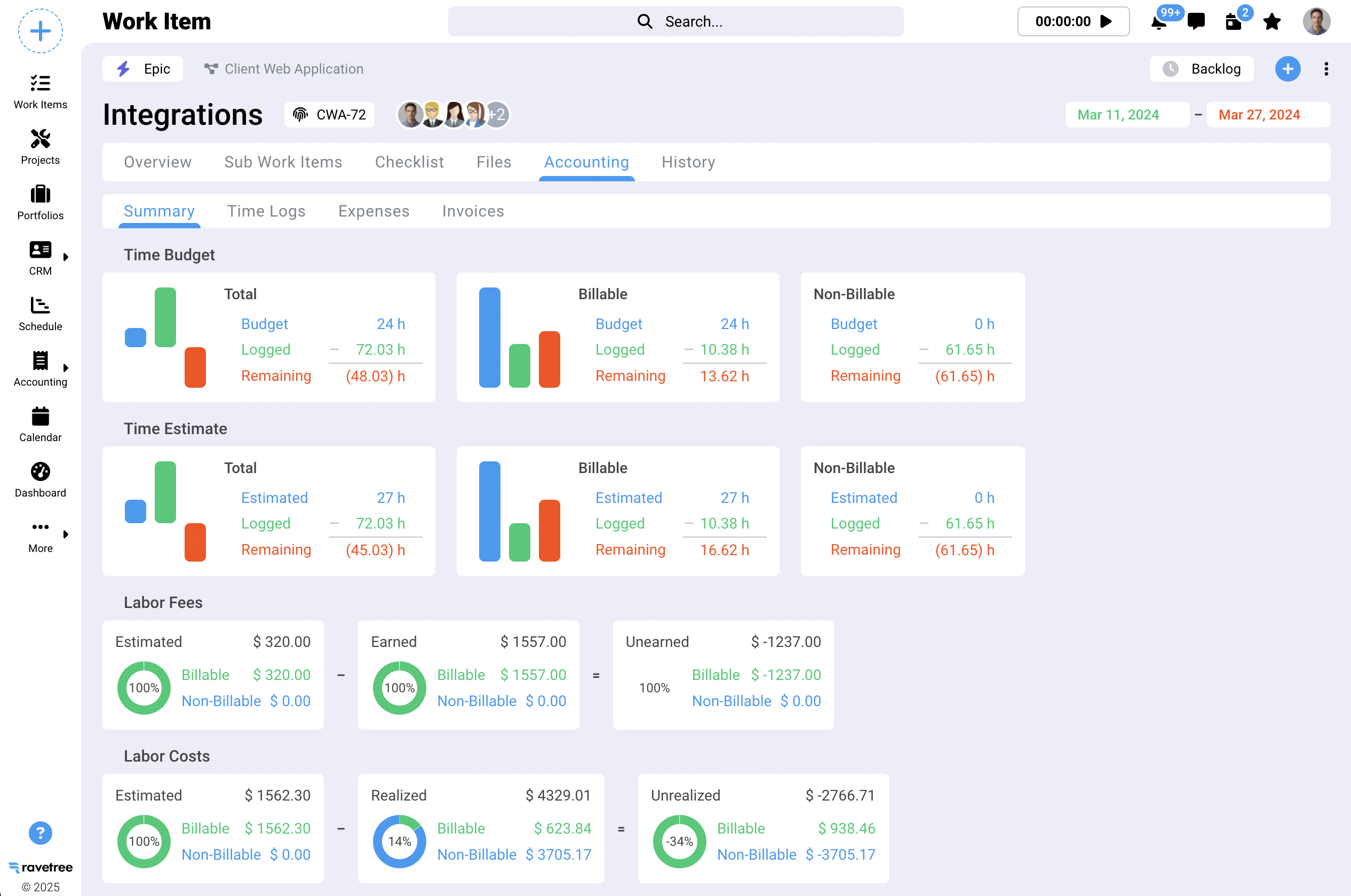
Frequently Asked Questions
Which platform is better for small teams?
Monday typically offers better value for small teams due to its visual interface and faster onboarding, though Asana's free tier supports more users with basic functionality.
How do integration capabilities compare between platforms?
Both platforms offer extensive integrations, but Asana focuses on deeper workflow connections while Monday emphasizes maintaining its visual interface across integrated tools.
Which platform handles complex project dependencies better?
Asana provides more sophisticated dependency management and timeline visualization, making it better suited for complex, multi-phase projects with intricate task relationships.
What are the main cost differences?
Monday generally costs more per user for comparable features, but includes more visual customization options. Asana offers more features in its lower tiers but charges premium rates for advanced capabilities.
Which platform is more suitable for client-facing work?
Both platforms offer client access features, but Asana's guest permissions and proofing capabilities typically provide better control for client-facing projects.
How do mobile experiences compare?
Monday's mobile app maintains better visual consistency with its desktop interface, while Asana's mobile app offers more complete functionality for power users.
Which platform offers better customer support?
Both platforms provide comprehensive support documentation, but response times and support quality can vary based on subscription tier and complexity of issues.


